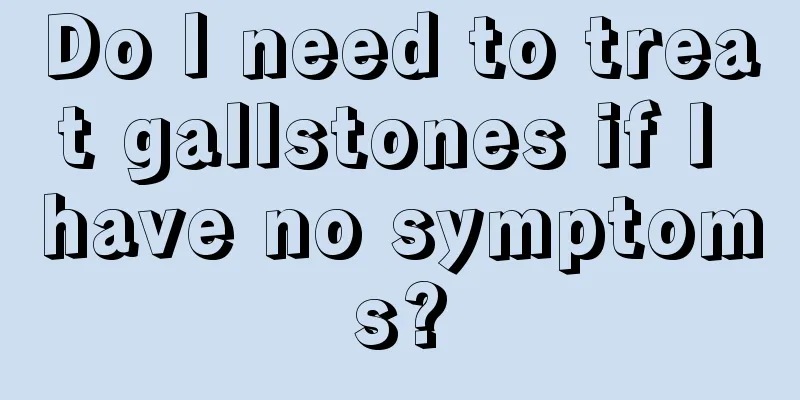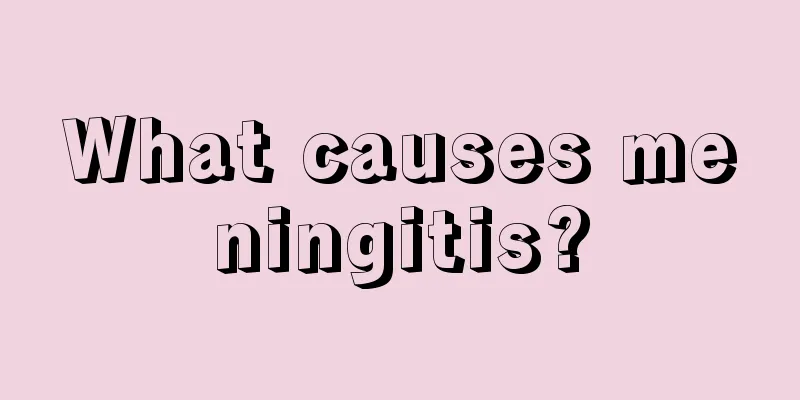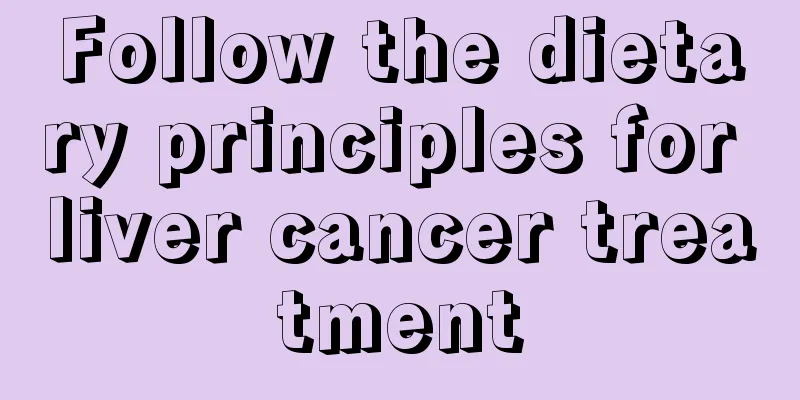Do I need to treat gallstones if I have no symptoms?

|
The most obvious symptom of gallstones is pain in the right upper abdomen. However, not all gallstone patients will have symptoms. Some gallstone patients have no symptoms. Generally speaking, if gallstones do not have any symptoms, most people will not choose to go to the hospital for treatment unless they experience physical discomfort. Do gallstones need to be treated if they have no symptoms? Should I treat gallstones if I have no symptoms? Whether asymptomatic gallstones need treatment can be determined based on the specific condition. Patients with the following conditions need treatment: 1. Patients with single or multiple gallbladder stones, some of which are larger than 2.5-3 mm in size; 2. Patients with gallstones, gallbladder polyps, and gallbladder adenomyosis; 3. Patients with hypertension, diabetes, coronary heart disease and other diseases; 4. Patients with localized thickening of the gallbladder wall exceeding 4mm or 5mm as indicated by B-ultrasound; 5. Patients whose gallbladder is full of stones and has no function. Do Gallstones Need Treatment? If gallstones have been discovered, whether treatment is needed depends on the individual situation. It can be roughly divided into several categories: one is symptomatic, and the other is asymptomatic. Asymptomatic gallstones can be observed, but patients with asymptomatic gallstones who have special diseases, such as mud-like stones, or patients with gallstones combined with medical diseases such as diabetes and renal insufficiency need further treatment. If the patient has symptomatic gallstones, further treatment is basically needed, and it is best to do further treatment. This is because gallstones are associated with many other further developing diseases. During an acute attack, gallstones can cause acute cholecystitis, gallbladder gangrene, or even perforation; if gallstones are discharged into the common bile duct, they can cause obstructive cholangitis and jaundice, and can even cause biliary pancreatitis, severe pancreatitis, or acute necrotizing pancreatitis. These conditions can threaten the patient's life, so further treatment is recommended for patients with symptomatic gallstones. Asymptomatic patients with gallstones: Conservative management Conservative treatment means temporary observation. In terms of conservative treatment, the scope is relatively narrow. For patients with asymptomatic gallstones, if the stones are single or do not cause perforation or obstruction, conservative treatment can be considered. Patients with symptomatic gallstones: Surgery However, once the patient experiences symptoms, such as pain or discomfort, or an attack of acute biliary colic, he or she needs to go to the hospital for relevant treatment. If the patient has symptoms, it is generally recommended to remove the gallbladder. If the gallstones are asymptomatic, you can actively perform cholecystolithotomy under laparoscopy to preserve the gallbladder and remove the stones. However, gallbladder preservation and stone removal are generally not recommended for patients with symptoms, because only laparoscopic cholecystectomy can eliminate the occurrence of related and more serious diseases. |
<<: Analysis of the causes of spots on the left cheek
>>: Why can't I have my teeth extracted in the afternoon?
Recommend
Survival period of breast cancer skin metastasis
People's living standards have improved, but ...
Is nasopharyngeal cancer contagious? What causes it?
Is nasopharyngeal cancer infectious? How is it ca...
Nasopharyngeal cancer seems to be hereditary
Does nasopharyngeal cancer seem to be hereditary?...
Why is my face often swollen?
Some people find their faces a little swollen whe...
What are the common hazards of hamartoma
What are the common hazards of hamartoma? There a...
Sulfur smoked wolfberry
Wolfberry has become a very popular health produc...
What is the pathogenesis of dystonia
I've seen many people asking about the pathog...
What to eat in the late stage of liver cancer? Pay attention to these three types of food
When liver cancer occurs, especially in the late ...
Where is the heart in the body?
The human heart is the most important organ, beca...
Is there a relationship between the occurrence of ovarian tumors and heredity?
In daily life, we need to pay attention to ovaria...
Can I wash and massage my feet when I have a cold?
As the seasons change, more and more people will ...
There are a lot of white flakes on the face
What does it feel like to have a lot of white fla...
What does lumbar spine MRI examine and what is its function
The lumbar spine is the part that we need to focu...
Can nasopharyngeal carcinoma be cured? Is chemotherapy necessary?
Can nasopharyngeal cancer be cured? Is chemothera...
How to remove oil stains from clothes
For us, it is very annoying to have oil stains on...









